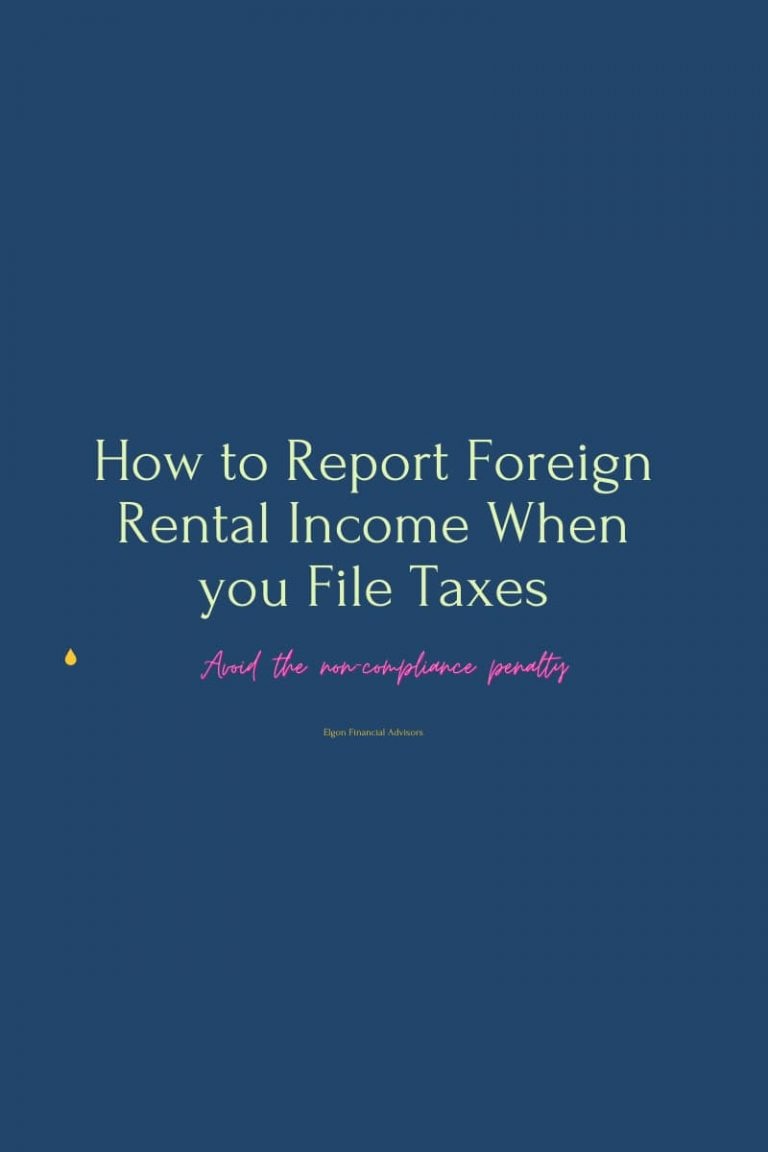What goes into tax filing in the US? This applies to both US tax residents and tax nonresidents.

If you’d prefer to listen, here is the episode we recorded.
🎙️ The IRC Code: A Course Map to Navigate U.S Taxes
Introduction To Filing US Taxes
If this is your first year filing taxes, this post tells you exactly what to expect and how to go about it. How to file taxes the first year as an immigrant.
If you are filing taxes as a US tax resident, remember that your taxes must include your worldwide income and assets.
The IRS tax reporting is based on trust and the expectation that you will voluntarily report all your income.
This includes income made from illegal activities up to and including stolen property, according to IRS publication 17.
There are many ways to reduce your tax burden, such as using deductions, exemptions, and certain tax-advantaged moves that will help you today and in the future.
Here are key points to keep in mind.
The tax deadlines to be aware of
Extensions
Data gathering – what you need to file taxes
Deductions
Tax refund or tax payment
Reducing Taxes – Tax Planning
Foreign assets reporting
US Tax resident living overseas
Ways to file taxes
Tax Filing Deadlines – US Tax Filing
It depends on the type of return you are filing. For example
If you are filing taxes as an S-Corp or a partnership, multi-member LLC, your tax deadline is March 15th.
If you are a regular W-2 employee or a corporation, your deadline is April 15th. This also applies to US residents living overseas.
If you are a green card holder living overseas and have abandoned your US residency but have not officially given it up by completing the correct forms, the IRS still counts you as a US tax resident and expects you to file taxes.
Tax Filing Extensions
Filing extensions are available but not automatic – unless you are a US resident living abroad. You get an automatic extension until June 15th.
When granted, an extension includes many of your international forms. For example, the extension will apply, if you need to file form 3520, the gift reporting form.
The extension deadline is typically 6 months, so your normal deadline + 6 months.
In certain cases, they will let you go to December 15th, depending on the kind of tax return you’re filing.
If you owe the IRS money, it is due on the tax filing deadline. The extension gives you more time to complete the filing, not more time to pay your taxes.
If you think you will owe money, plan to send it to the IRS when applying for the extension. Failure to make the payment will likely result in penalties and interest.
Unfortunately, it does not work in reverse; if the IRS owes you money, you will not get any interest from them, especially since they don’t know how much they should be sending you.
Data Gathering – Tax Filing Guide
To file your taxes, you need to gather a lot of data. Some examples of these forms are:
Income (both passive and active)
W-2
1042-S (Foreign nationals – with US income – without certain withholding)
1099 (Interest, dividends etc)
Rental Income
Scholarships
Overseas income (Year-end bank statements, foreign partnerships statements, etc.)
Deductions – Two Major Categories
Above-the-line deductions
Contributions into individual retirement accounts, health savings account
Self-employed, employed health insurance deductions that you made, etc.
Below-the-line deductions
Standard deduction – everybody gets this based on filing status
Itemized deductions
Examples of itemized deductions are
Medical expenses (if more than 7.5% of AGI) – includes your dependents’ expenses.
Charitable contributions
State and local taxes (not more than $10,000)
Mortgage interest (up to 750,000K of debt)
Casualty losses from a federally declared disaster.
If the itemized deductions are more than the standard deduction, then use that for the taxes.
You can find more information about deductions on Schedule A.
Credits include dependent care credits, tuition credits, etc., based on your income.
If you file as a US nonresident, you get very few deductions. However, this will differ for some countries based on various tax treaties, visa types, length of stay, etc.
Tax Refund Or Tax Owed
The ideal situation is where you don’t owe the government anything, and the government doesn’t owe you.
But it rarely works out this way.
If you get a refund, the IRS has held your money without paying interest.
Consider adjusting your withholding so you get more money back during the year.
If you end up owing money, you could end up paying a penalty to the IRS.
We have a pay-as-you-go system, so the assumption is you are paying taxes regularly as you earn income.
According to the IRS, you should do the following to avoid the penalty.
Owe less than $1,000 in tax after subtracting withholding and refundable credits.
Paid withholding and estimated tax of at least 90% of the current year’s tax or 100% of the tax shown on the return for the prior year, whichever is smaller.
Is it better to pay or get a refund? I prefer paying the IRS but excluding the penalty.
Some people use this as forced savings – plan to have a plan for the money before you get it.
Reducing Taxes – Tax Planning
The easiest way is to reduce your taxable income. This is what proactive tax planning is all about.
This is where you plan specific tax moves that may or may not benefit you today but will make a huge difference in the future.
I typically request the last couple of years’ taxes when working with a client.
It’s a great way to see what kind of tax moves they have made. It also allows us to start uncovering tax planning opportunities.
Now and again, I catch tax-filing errors, which we fix by amending the previously filed taxes.
Here are a few examples going forward:-
Save into tax-deferred accounts (401k, 403B etc)
Save into HSA, FSA (through work)
Bunch deductions – so you have more than the standard deduction.
Make certain business elections.
Avoid ordinary dividends and instead choose qualified dividends.
Avoid short-term gains on investments – choose long-term.
If you have ISO’s, aim to stay below the AMT threshold.
PS: You can put money into your Roth IRA (directly or via the backdoor Roth strategy) before the tax deadline – April 15th for the previous year.
This will not save you on taxes today but will in the future since you won’t have to pay taxes on the growth.
But it all depends on what country you will live in when you withdraw the money.
Foreign Assets Reporting With US Tax Filing
We’ve included foreign income above if you are filing as a US tax resident. You should also plan to report all overseas assets.
Bank and financial assets.
You must disclose any stakeholding you have in any foreign entities, including foreign corporations, foreign partnerships, disregarded entities, etc.
Failure to report the above can cost you thousands in penalties.
If you have not reported these assets or substantially completed these forms, amnesty programs can bring you into compliance.
Keep in mind that some of the programs have penalties for becoming compliant.
PS: I’m finding more and more people with undisclosed overseas assets, and we’ve been working with tax professionals to help them comply. Ignorance is no defense.
US Tax Resident Living Overseas
If you are a green card holder or a US citizen living overseas, you must file your yearly US tax returns.
If you meet certain residency requirements, you can exclude most of your foreign income via the Foreign Earned Income Exclusion (FIEE), Foreign Housing Exclusion (FHE), and/or Foreign Housing Deduction.
In 2023 – using the FEIE, you can exclude up to $120,000 per person.
Another option here is the Foreign Tax Credit – a US tax credit for overseas taxes.
All these strategies help with double taxation avoidance.
Deciding when and how to use these provisions is something you want to do with the help of a tax professional.
Filing Taxes – How?
Only you can decide the best solution for your situation. Consider the complexity of your taxes and your income.
We move from simple to complex if it involves stock sales, such as RSUS, foreign assets, rental property, etc. Here are a couple of ideas.
Self-preparation – Online Services
If you are filing as a US tax resident, You can do this via a lot of software.
The most famous one is TurboTax by Intuit. Other examples are TaxSlayer and TaxAct.
If filing as a nonresident, SprintTax is a great option.
This is perfect for international students on F-1 and other student visas.
Other smaller entities do the same work. Most of these online services will also offer you the option to work with a professional for a higher price.
Big Tax Filing Firms
The two famous ones are H&R Block and Jackson Hewitt.
A CPA / CPA Firm / EA / EA Firm
Another option is to use a tax professional as a CPA or Enrolled agent.
They’ll be solo, a small boutique firm, or a bigger national company.
Ensure they can meet your needs.
For example, when I work with Canadians in the US, I refer them to a cross-border firm. That way, they file their Canadian and US taxes together.
Be proactive and informed; and hopefully, tax season will pass without any issues.
Check out our recorded podcast episode if you’d like to listen to this blog post instead of reading it. It has a lot more details.
🎙️The IRC Code: A Course Map to Navigate U.S Taxes.
Need Help With Your US Finances?
Check out our process, which will help you evaluate our services and let you make an informed decision about working together.
Get Started Now
If you are not ready to start, that’s okay, but please stay on top of our regular updates by email or by joining here. Sign Up Here

6 Things to Do
When Starting A Job on H-1B Visa
You are starting a new job on a work visa, there are some critical things, that will set up for financial success in the first 3-6 months. Download the free guide below for the detailed list!
We never spam. By signing up you’ll also receive access to future resources right to your inbox.
Disclaimer: This article is provided for general information and illustration purposes only. Nothing contained in the material constitutes tax advice, a recommendation for the purchase or sale of any security, investment advisory services, or legal advice. I encourage you to consult a financial planner, accountant, and/or legal counsel for advice specific to your situation. Reproduction of this material is prohibited without written permission from Jane Mepham and all rights are reserved. Read the full disclaimer here.






